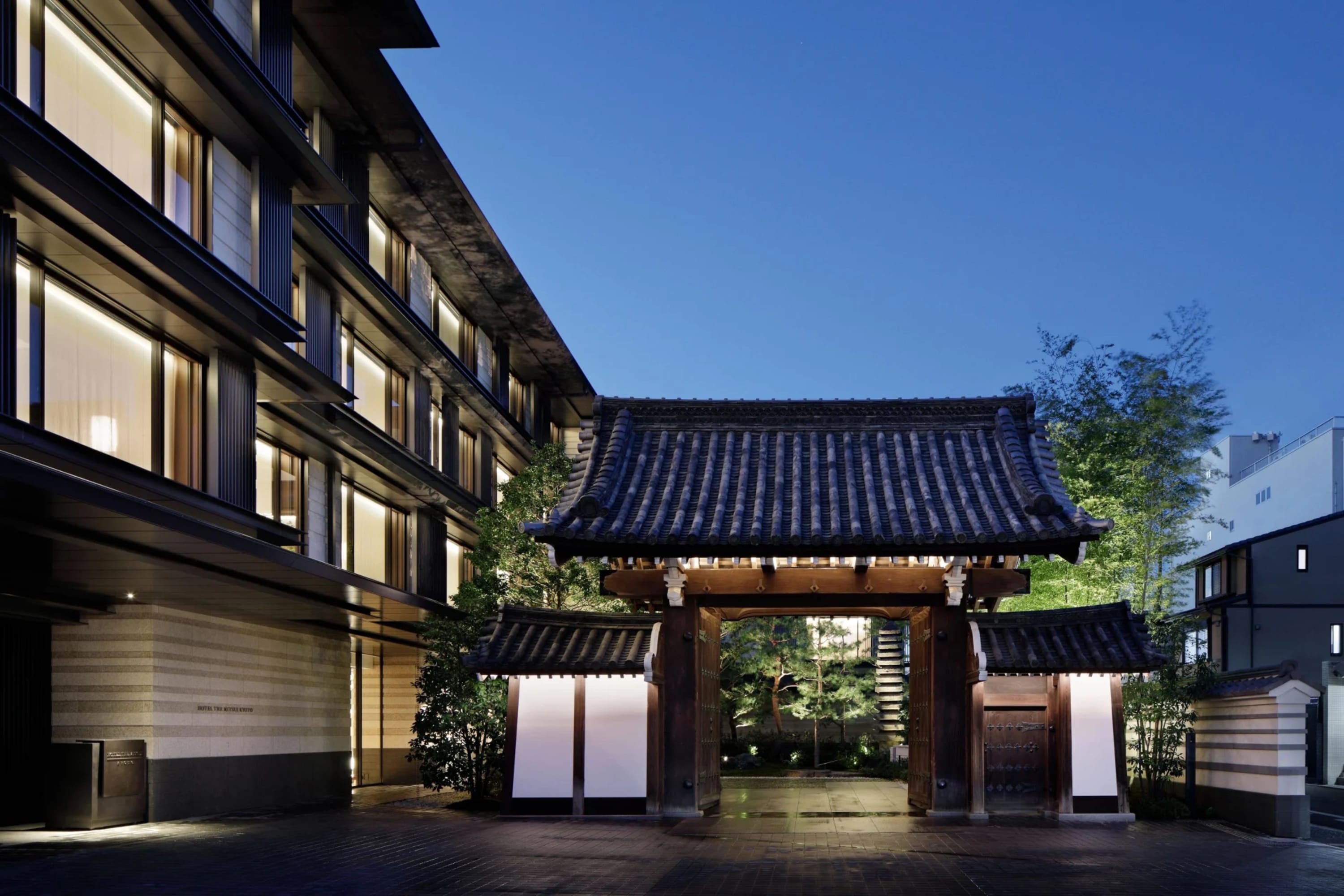
Image courtesy of HOTEL THE MITSUI KYOTO, a Luxury Collection Hotel & Spa
The best places to stay in Japan span cosmopolitan hubs, traditional mountainside towns and an enchanting countryside. Few other places in the world blend urban life with natural beauty as well as Japan. Centuries-old temples stand next to contemporary high-rises. Majestic mountain peaks rise above urban skylines. And verdant forests complement the rise and fall of hilly landscapes.
“Japan is a destination where there truly is something for everyone, and its rich culture and timeless traditions offer experiences you won’t find anywhere else,” Fora Advisor Anna Dobrenski said.
Below, we break down where to stay in Japan, including our top destinations and hotel recs provided by Fora travel advisors — plus a few extra insights and tips.
Tokyo
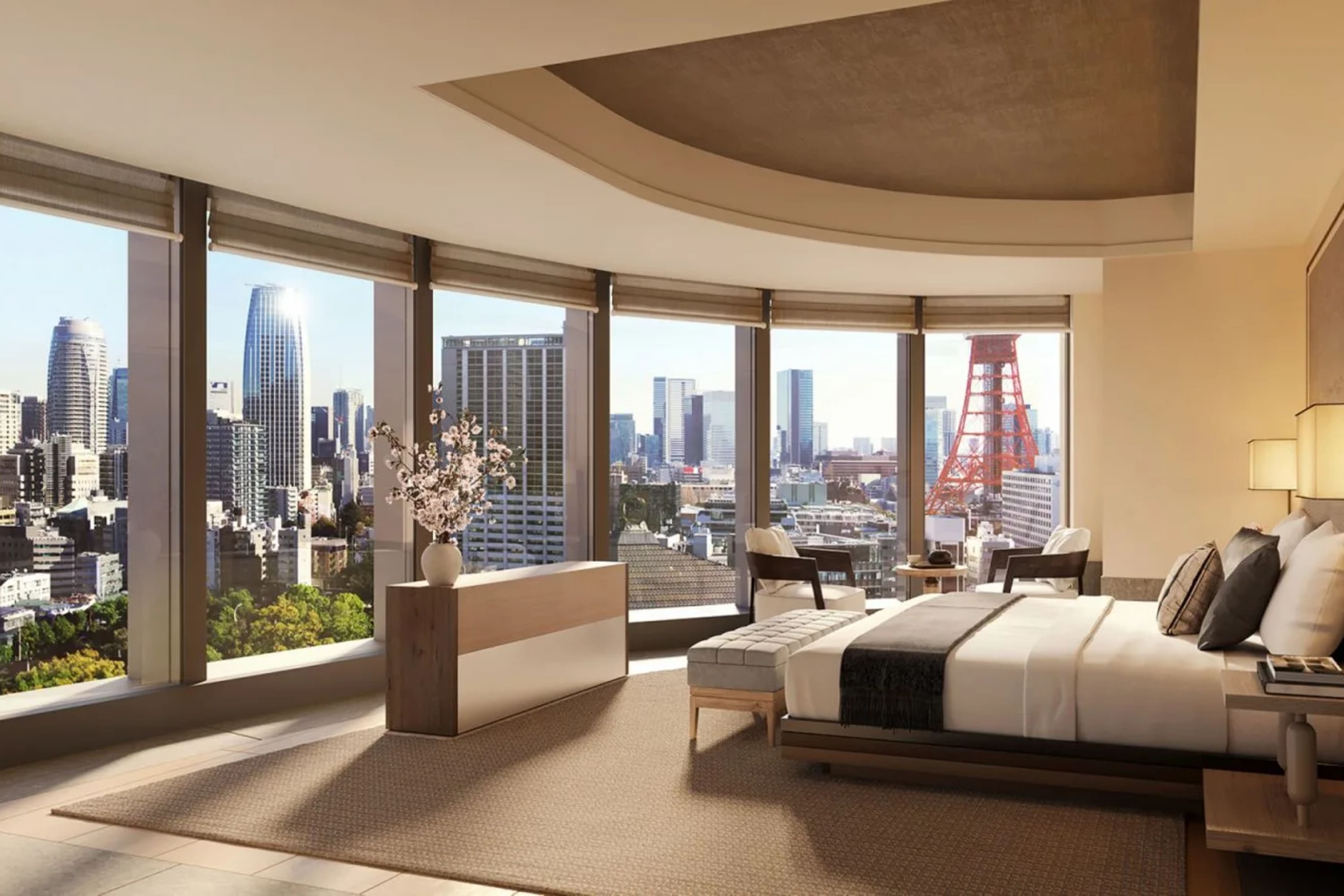
Image courtesy of JANU Tokyo
Tokyo is arguably the best place to stay in Japan if you’re looking for a (breathtaking) snapshot — and then some — of contemporary Japan.
“Tokyo is a city that keeps you on your toes in the best way,” Anna said. “One moment, I was taking in the peaceful vibes at Meiji-Jingu Shrine, and the next, I was exploring Harajuku’s colorful streets.”
You’ll find many of Japan’s best hotels, restaurants and things to do here. The list of places to see and explore is nearly endless: Dance and party in the electric wards of Shinjuku and Shibuya, savor Japanese and international fine dining in Ginza, enjoy upscale shopping in Roppongi, explore local culture in Asakusa, marvel at Japanese pop culture in Akihabara… Tokyo is a can’t-miss destination whether this is your first time in Japan or your 20th. (Check out our Japan regulars’ itinerary, authored by Fora HQ’s in-house Japan expert, for a detailed travel plan for return visitors.)
“This city can be a lot to take in, especially if it is your first stop in Japan,” Fora Advisor Samantha Pappas said. “It is best to split up the city into sections day by day, as they are all so different.”
If you’re interested in immersive contemporary art, Fora Advisor Chloe Kletsa has a recommendation: TeamLab. The company’s Tokyo venues offer “mind-bending” and interactive exhibits.
“You'll find yourself walking through water, surrounded by blooming flowers and even becoming part of the artwork itself,” she said. “It's a truly unique and unforgettable experience that blurs the lines between art and reality.”
Tokyo is also well connected to the rest of the country, both by high-speed rail and roads if you prefer to rent a car (the former is extremely efficient, though).
Where to stay in Tokyo, Japan

Image courtesy of Four Seasons Hotel Tokyo at Otemachi
Deciding where to stay in Tokyo is no easy task. Options abound to a point where, as Fora Advisor Daryn Schwartz highlighted, it usually makes more sense to stay at multiple hotels so you can methodically explore different sections of the city. Since many flights to Japan first land in Tokyo, Fora Advisor Rachel Meyers recommends bookending your trip — regardless of your intended destination — with a few nights in Tokyo.
She added that a nicer hotel to start is great, “so you can ease into your trip and beat the jet lag.” When you’re reaching the tailend of your trip, she added, “pick a cool boutique hotel in a trendy neighborhood — like TRUNK (HOTEL) — to get an authentic flavor of the city and feel like a local.”
Our Tokyo hotel recommendations all rank among Japan’s Michelin-Key hotels.
JANU Tokyo: A new concept spearheaded by Aman — is a modern, wellness-focused luxury retreat that blends Japanese aesthetics with a contemporary vibe.
Fora Perks at JANU Tokyo include a $100 food and beverage credit, breakfast daily, an upgrade and extended check-in/out whenever possible.
Aman Tokyo: A serene, minimalist sanctuary with exceptional views of the Tokyo skyline and top-tier service. (Aman and Japan were made for each other.)
Fora Perks at Aman Tokyo include a $100 hotel credit, breakfast daily, an upgrade and extended check-in/out whenever possible.
Four Seasons Hotel Tokyo: Fora’s top-booked hotel in Japan is a sophisticated urban oasis with refined dining and the brand’s signature A+ service.
When you book Four Seasons through Fora, you will enjoy exclusive Four Seasons Preferred Partner benefits. Your advisor will be pleased to give you more details.
TRUNK (HOTEL) YOYOGI PARK: A stylish boutique choice that emphasizes sustainable living and has a vibrant community atmosphere.
Don’t overlook Yokohama…
Yokohama, unofficially part of the larger Tokyo metropolis, tends to get overshadowed by its internationally famous sister city. But Yokohama is nonetheless one of the best places to stay in Japan. It’s considerably less crowded than Tokyo throughout the year, yet offers many of the same experiences and attractions. Tokyo is also quite close. You can stay in Yokohama and take day trips to Tokyo to get the best of both cities. Yokohama is a hub for shopping, gastronomy and authentic Japanese entertainment. The waterfront area — marked by a massive and beautifully lit Ferris wheel — is especially inviting, and typically where you’ll find the city’s best accommodations.
…or Kamakura
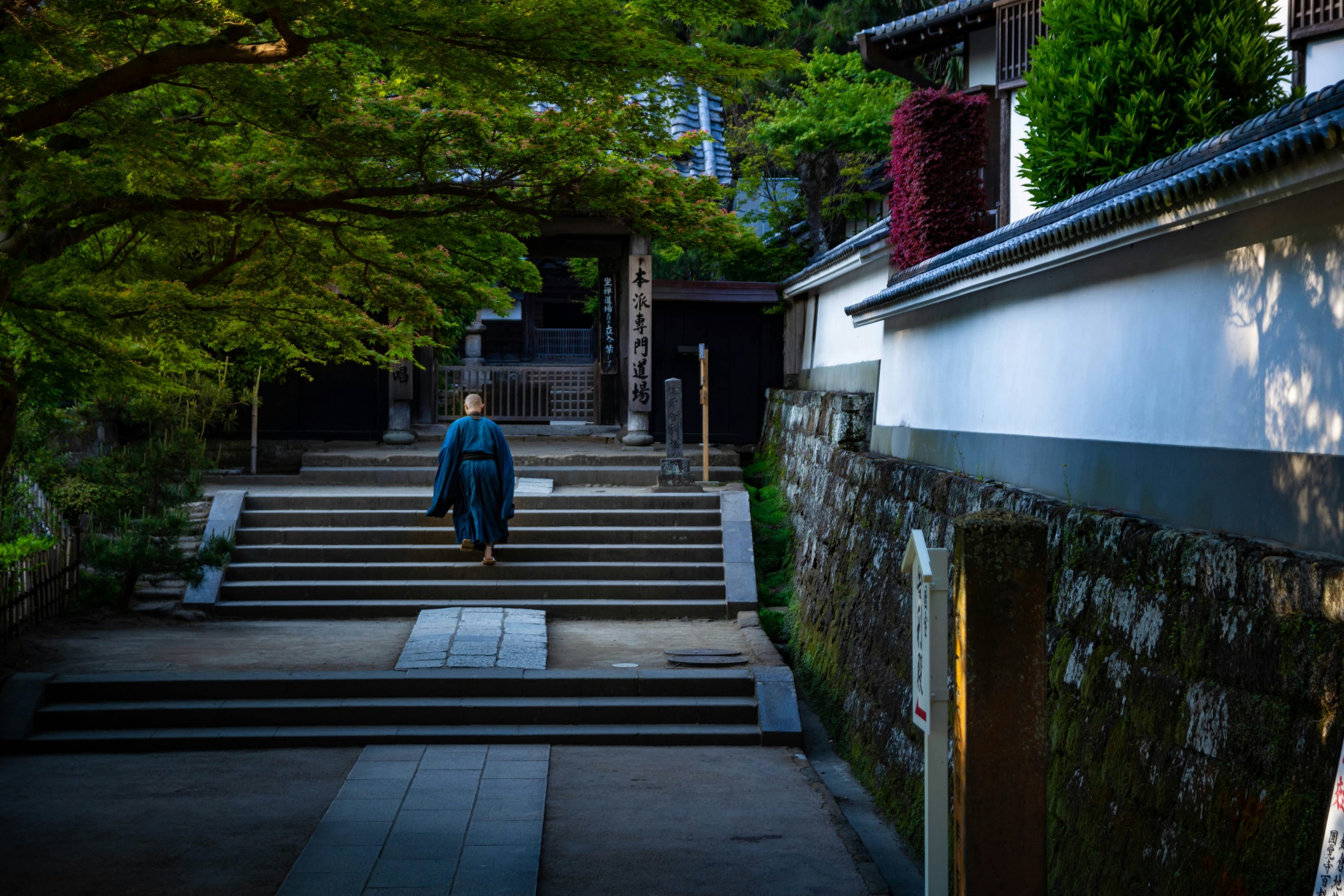
Kamakura is also (unofficially) part of Tokyo’s massive metropolis, but it feels far removed from the latter’s urban sprawl. Expect to see gorgeous centuries-old Buddhist or Shinto temples along with lush gardens, small forests and quaint rivers. The balance between development and nature is delightfully harmonious. While Kamakura isn’t quite as close to Tokyo as Yokohama, day trips to the big city are still easily accessible. For example, you could visit Tokyo one day, then enjoy Kamakura’s beaches the next. Consider Kamakura where to stay in Japan if you want to experience the country at its most traditional without sacrificing access to its contemporary side.
Kyoto
Whereas Tokyo represents modern Japanese society, Kyoto is a case study in Japan’s traditional culture in an urban package. You’ll still find all the major elements of a modern city here, but also thousands of temples and examples of pre-World War II architecture, many of which are hundreds of years old. Kyoto is easily the best place to stay in Japan if you want to explore Japanese culture and architecture at its most grandiose. The most notable examples include Kinkaku-ji Golden Temple and the Fushimi Inari Taisha shrine. Consider getting off the beaten path and explore the Arashiyama Bamboo Grove, a tranquil greenspace with winding paths and historic shrines.
“The city effortlessly blends Japan’s ancient traditions and natural beauty, featuring stunning temples, serene gardens and historic tea houses that transport you to another era,” Fora Advisor Samantha Pappas said.
As traditional as Kyoto is, there’s still plenty of contemporary offerings. Chic shopping and eateries are around every corner, as are notable attractions. For example, Fora Advisor Chloe Kletsa highlighted the Nintendo Museum, which chronicles the company’s history from its beginnings as a playing card company to its current status as a titan in the video game industry. Chloe added that the museum pairs well with a stop at Nintendo Land, part of Universal Studios Japan in Osaka.
Fora Advisor Anna Dobrenski detailed a dining experience in Kyoto's Gion district where two maikos (geishas in training) spoke about their lives and what drew them to the tradition — all while sampling local cuisine and sake.
“It was such a fun and unique way to connect with this incredible part of Japanese culture,” she said.
Cultural experiences like this are especially common in Kyoto. Whereas Kamakura grants access to Tokyo for a drastic contrast between new and old, Kyoto feels like a blend of both.
Where to stay in Kyoto, Japan
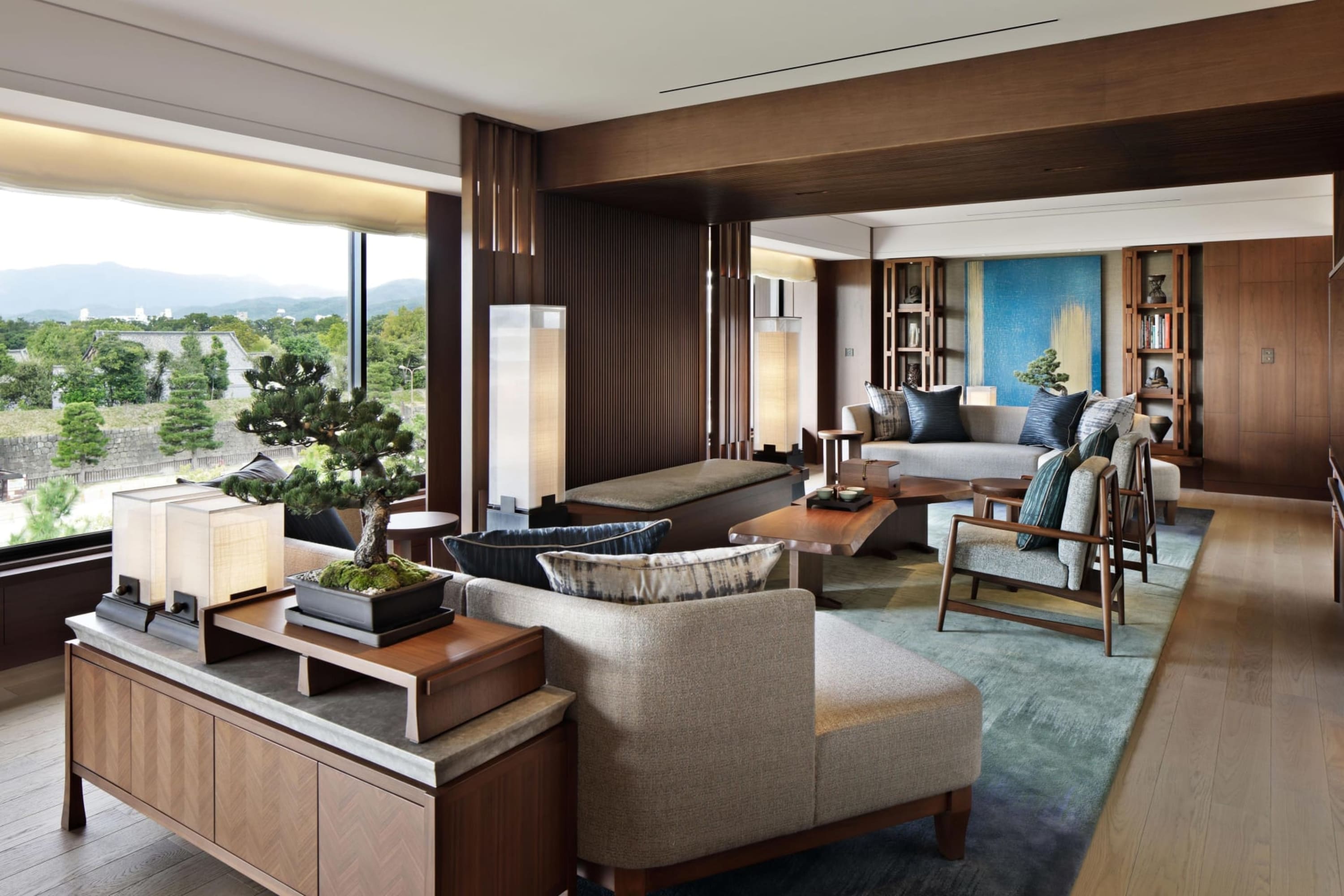
Image courtesy of HOTEL THE MITSUI KYOTO, a Luxury Collection Hotel & Spa
As for where to stay in Kyoto, we like two properties in particular.
HOTEL THE MITSUI KYOTO, a Luxury Collection Hotel & Spa: A Fora Reserve partner near Nijo Castle that melds traditional Kyoto elegance with contemporary Japanese design. You’ll love the quiet ambiance, natural hot spring bathing and exquisite dining experiences.
“Kyoto is a place that feels like stepping back in time. A stay at Hotel Mitsui made it even more special,” Anna said.
Fora Reserve perks include $100 hotel credit, a welcome amenity, daily breakfast, an upgrade and extended check-in/out whenever possible.
The Shinmonzen: An upscale boutique hotel designed by Tadao Ando with an intimate and artistic vibe. It’s in the heart of Gion, one of Kyoto’s most explorable neighborhoods. You’ll love the hotel’s Japanese fine art-inspired décor, traditional aesthetic and premier location in Gion Shirakawa, one of Kyoto’s most artful and exciting neighborhoods.
Fora Perks include ¥15,000 dining credit, welcome amenities and an upgrade whenever possible.
Osaka
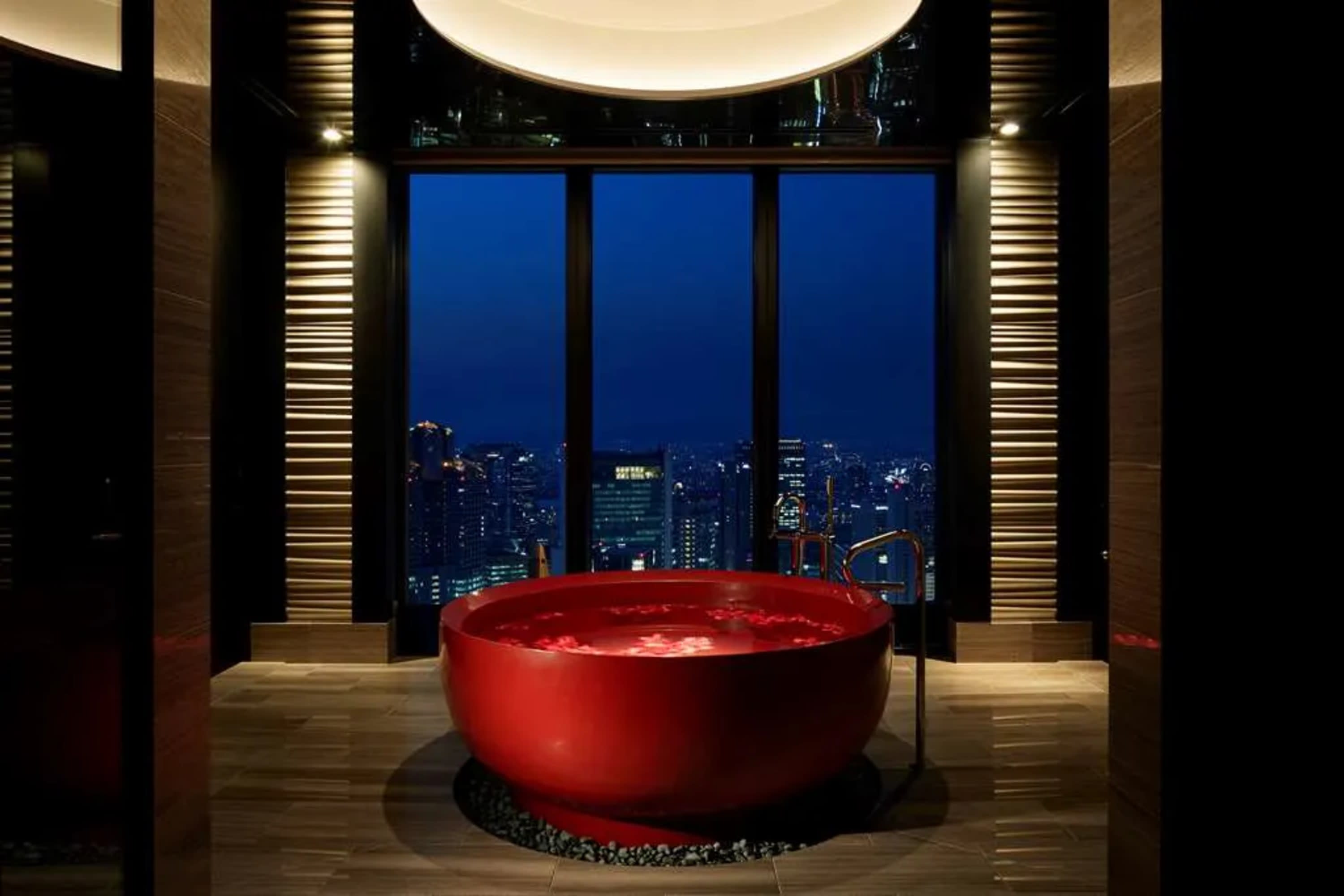
Image courtesy of Conrad Osaka
Osaka — often called “Japan’s kitchen" — is where to stay in Japan if you want to sample authentic local gastronomy and international cuisine. In fact, Osaka is widely regarded as one of the best foodie cities in the world (check out 14 must-try foods in Osaka). The Namba area of Chuo Ward, in central Osaka, is the city’s liveliest district. You’ll find Osaka’s top nightclubs, bars and restaurants here. It also borders the Osaka Castle area, which almost feels like a separate world. Between the two areas, you can experience the best of Osaka’s modern and traditional Japanese culture.
Osaka’s food markets are “where you can taste the city’s culinary soul,” Anna said.
Tenjinbashisuji Street, for example, is one of Osaka’s — and Japan’s — most celebrated areas for foodies. Graze a wide variety of dishes — Anna recommended taiyaki, which are fish-shaped cakes, and local tempura, in particular.
Where to stay in Osaka, Japan
Four Seasons, Conrad and Zentis headline our hotel picks for Osaka. You can also ask a Fora Advisor where to stay in Osaka for personalized neighborhood and hotel recommendations.
Four Seasons Hotel Osaka: Offers the brand’s trademark service and class. One of the highlights is the GENSUI floor, which provides a modern take on the traditional ryokan experience. There’s tatami mat flooring, sliding doors and luxe futon beds.
When you book Four Seasons through Fora, you will enjoy exclusive Four Seasons Preferred Partner benefits. Your advisor will be pleased to give you more details.
Conrad Osaka: Sometimes called the "Castle in the Sky,” it’s housed in a luxurious high-rise with views of the city’s skyline.
Fora’s Hilton for Luxury partner perks include $100 hotel credit, daily breakfast and an upgrade whenever possible.
Zentis Osaka: A chic boutique hotel with a minimalist design and thoughtful Japanese design accents throughout. It’s where to stay in Osaka for a relaxed yet refined stay.
Fora’s Design Hotels Pro partner perks include daily breakfast and an upgrade whenever possible.
Hakone
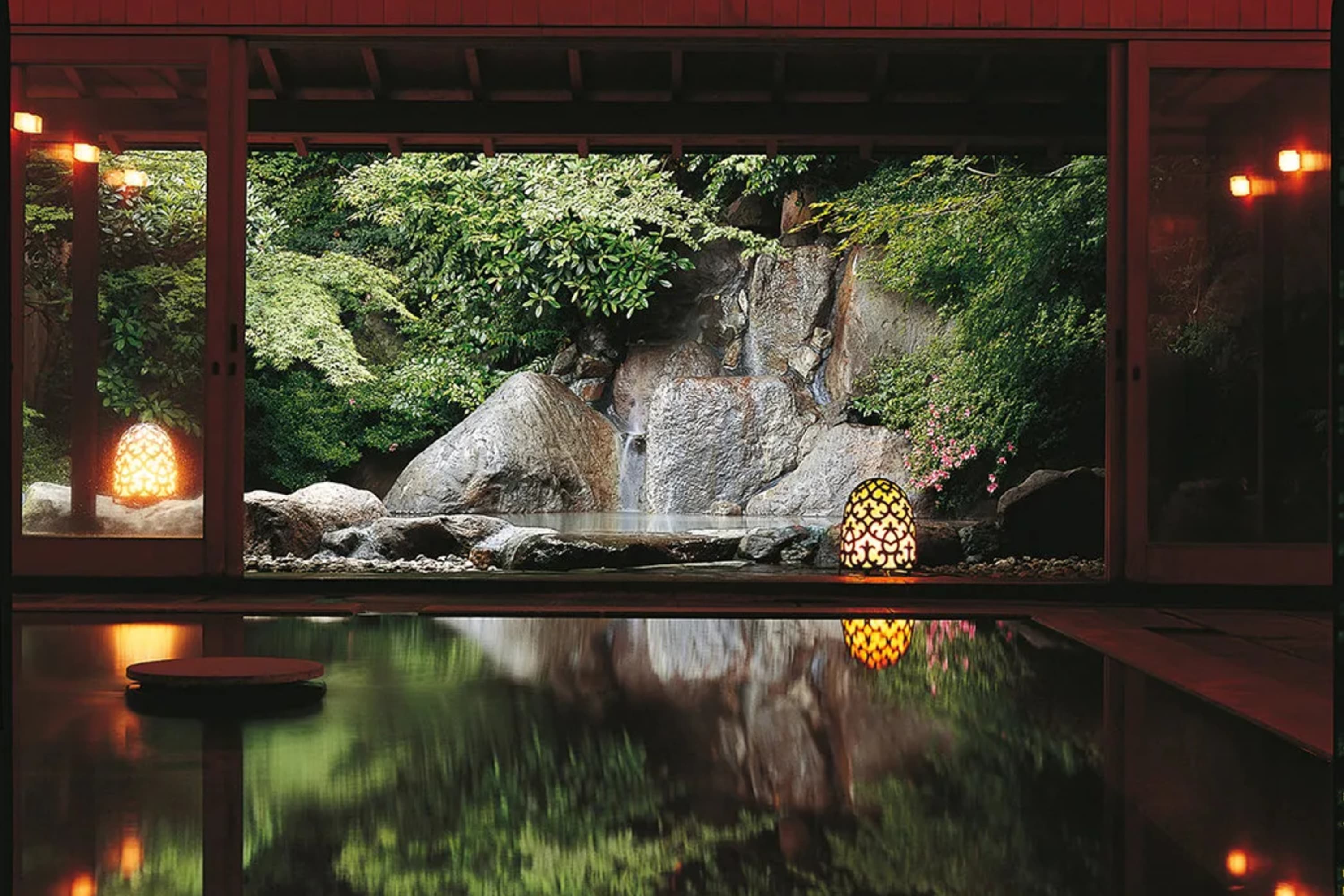
Image courtesy of Gōra Kadan
Hakone is a huge departure from the bustling cities of Tokyo, Kyoto and Osaka — all home to millions of people. Hakone’s population totals less than 11,000 people. It’s where to stay in Japan for a quiet, countryside getaway. And with views of Mount Fuji and the relaxing atmosphere of its famed hot springs, it’s a romantic spot for couples, too. If you’re spending at least a week in Japan, particularly near Tokyo, Hakone offers a welcome change of pace.
“A stay in Hakone’s renowned onsens (thermal spas) is an unforgettable experience, particularly in a traditional ryokan,” Fora Advisor Kristin Chong said. “Soaking in your private hot spring bath, surrounded by nature, offers a serene retreat after days of exploration.”
Fora Advisor Rita Carton added that Hakone offers some of the best views of Mount Fuji on clear days. She also shared that the Hakone Open-Air Museum, which displays works from artists including Henry Moore and Picasso, is worth visiting.
Where to stay in Hakone, Japan
Gōra Kadan: A ryokan in a former imperial villa that offers an experience based in traditional Japanese hospitality. The three-Michelin-Key property is renowned for its thermal springs and exquisite Japanese kaiseki cuisine, which emphasizes balance in flavor and presentation across several courses.
Hokkaido (including Sapporo and Niseko)
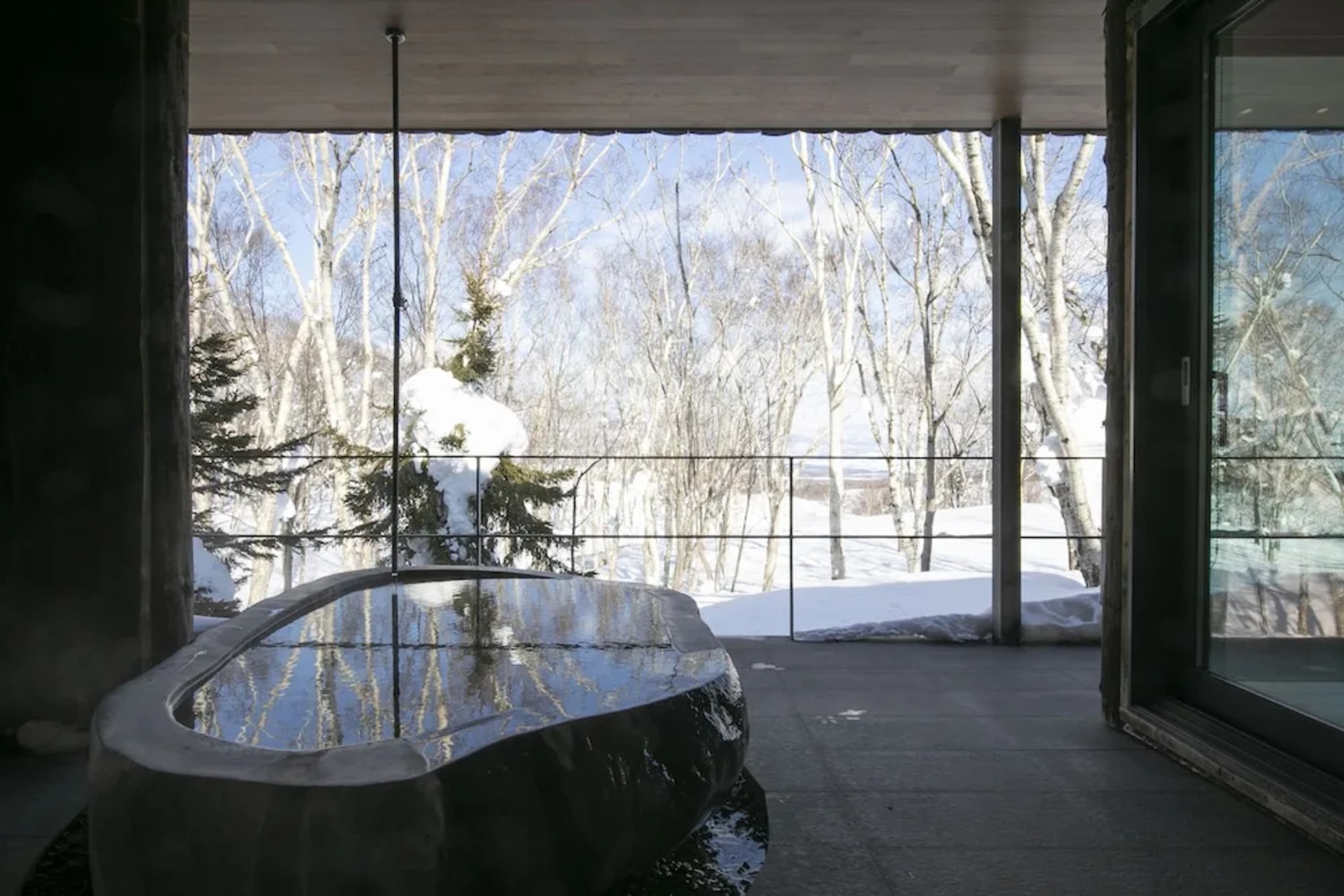
Image courtesy of Zaborin
Hokkaido is one of the most unique places to visit in Japan — and one of the most beautiful. Hokkaido is an island just north of Japan’s main island of Honshu (where you’ll find Tokyo, Kyoto and Osaka). If you’re looking for a Japanese destination that almost completely forgoes urban scenes, this is it. Sapporo, which is best known for its breweries, is Hokkaido’s only major city. Otherwise, the island largely serves as an outdoorsy sanctuary, with limited development centered on exploring the island’s gorgeous landscapes. Hiking, snow sports — particularly around Niseko — fishing and simply enjoying Japan’s countryside are the top attractions here. (Check out our article on the best months to visit Japan for weather details.)
“Niseko is renowned for its unparalleled soft and powdery snow, making it a dream destination for breathtaking scenery, world-class skiing and thrilling snow adventures,” Fora Advisor Kristin Chong said.
Meanwhile, Fora Advisor Kristyne Wada said that the town of Otaru, just outside of Sapporo, has some of Japan’s best sushi. She added that the food stalls and local shops are especially worth visiting.
Where to stay in Niseko, Japan
Park Hyatt Niseko: A contemporary retreat in Niseko’s ski region with access to premier outdoor activities year round.
Fora’s Hyatt Privé partner perks at Park Hyatt Niseko Hanazono include a $100 hotel credit, a welcome amenity, daily breakfast and an upgrade whenever possible.
Zaborin: A secluded luxury ryokan in the forested hills of Niseko. It blends minimalist contemporary architecture with traditional Japanese aesthetics. The property features a private onsen, kaiseki dining and a sense of exclusivity.
Naoshima
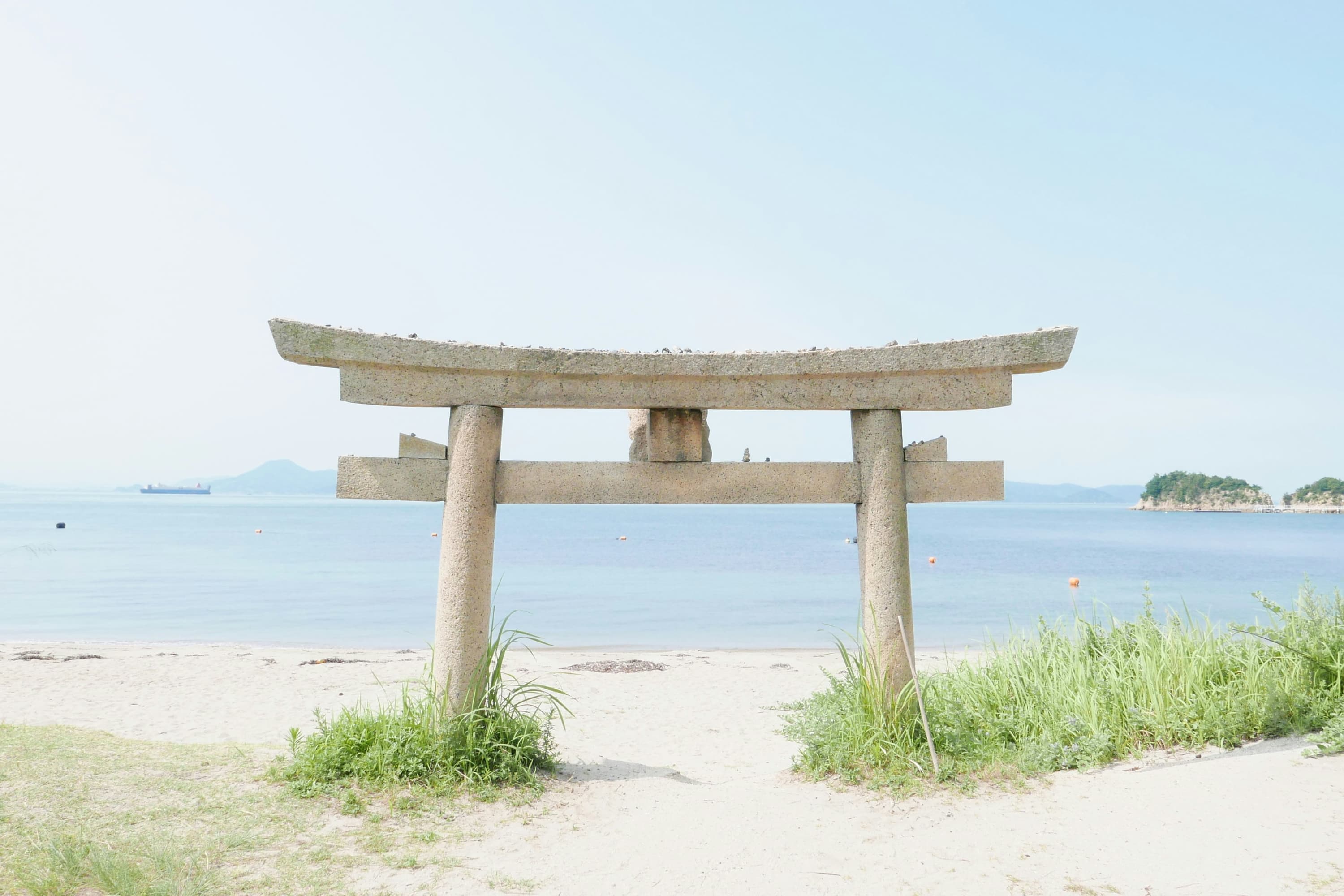
Naoshima doesn’t have the same star power as Tokyo or Osaka, but this small island in the Seto sea is one of the best places to stay in Japan for a relaxing, cultural experience. It’s rarely crowded (on the same scale as Japan’s larger cities, anyway). But it’s can’t-miss territory if you have a keen interest in modern Japanese art and architecture. One-off exhibits, museums and Art House projects — a trend where older homes are renovated in fresh ways — can be found throughout the island.
“If you're looking to experience a ryokan, Naoshima is the perfect place to try out this type of accommodation,” Fora Advisor Kirsty Cowie said. “Two days is ample time to explore the art island.”
Naoshima is also scenic in a natural sense. Its beaches, in particular, are gorgeous and low-key throughout much of the year.
Okinawa
Okinawa is a favorite destination among Japanese locals and international travelers. Over millennia, its distance from the main island of Honshu led to the development of its own distinct and rich culture — from customs to architecture to, of course, its gastronomy. Beyond the cultural appeal of exploring Okinawa, the island is undeniably gorgeous. The beaches here are among the best in Japan, and the main draw for most travelers. If you’re planning a longer trip to Japan, Okinawa offers an enjoyable change of pace and scenery from Japan’s metropolises.
Fun fact: Okinawa is one of the world’s few Blue Zones, areas where most residents live well past the age of 80 (and often into their early 100s). The research organization that discovered this quality hypothesizes that Okinawan culture plays a big part, citing factors like a low-calorie-high-nutrient diet, a strong sense of community and active lifestyles.
Where to stay in Okinawa, Japan
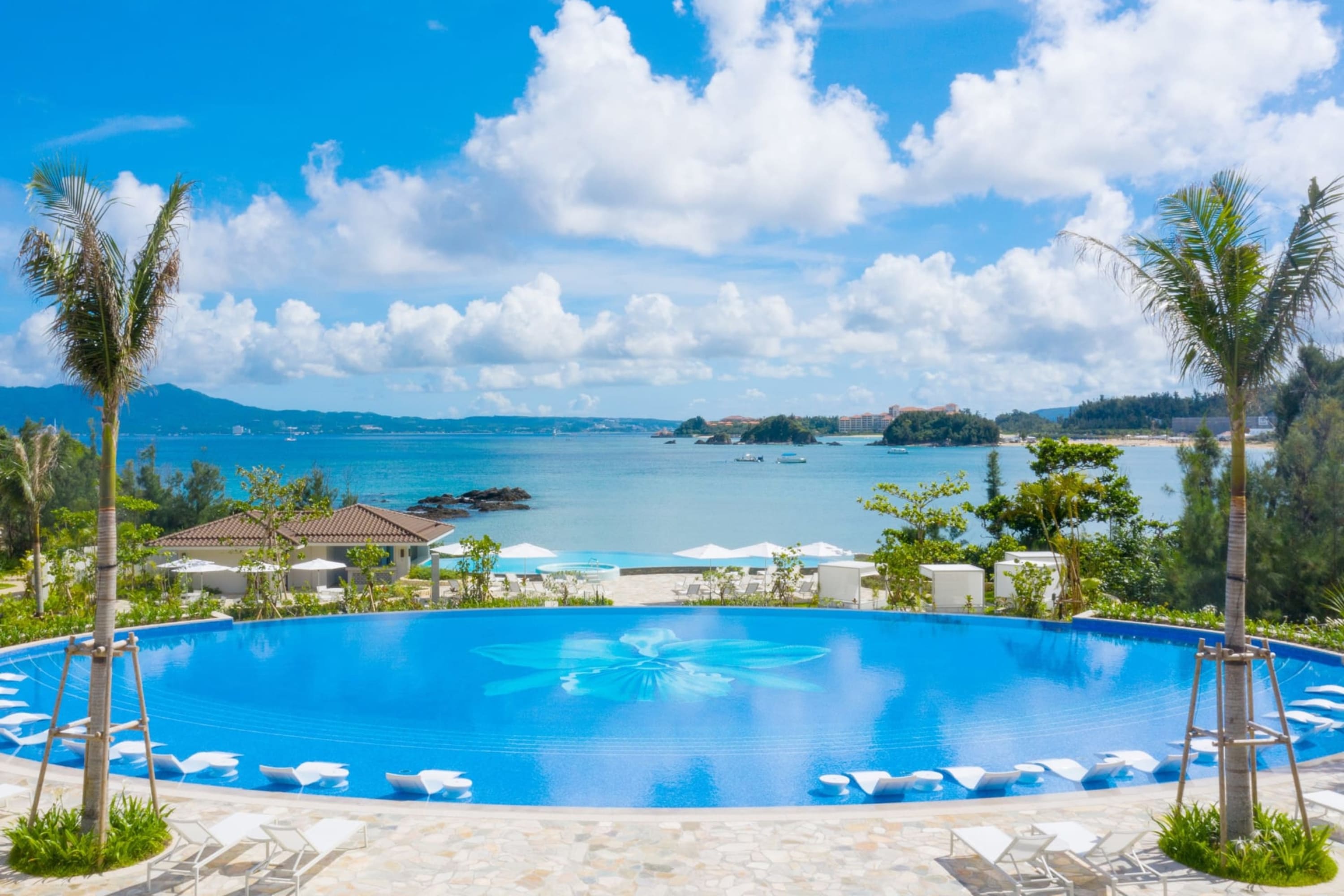
Image courtesy of Halekulani Okinawa
Halekulani Okinawa: Located along the serene coastline of Onna, Okinawa’s northern coast, this luxury resort offers a blend of Hawaiʻian-inspired elegance and Okinawan charm. Enjoy ocean views, world-class dining and a quiet vibe complemented by pristine beaches and lush surroundings.
Fora Perks include $100 hotel resort, a welcome amenity, daily breakfast, and an upgrade whenever possible.
Nara
Nara is another great option if you’re looking for an authentic, less crowded experience. The city is famous for its unusually tame deer population, which casually coexists with locals throughout the city. It might be strange to see deer strolling through Nara’s parks and streets, but (respectfully) interacting with the deer is perfectly acceptable for travelers, and a magical experience for families. Beyond friendly deer encounters, Nara once briefly served as Japan’s capital, leading to significant cultural development.
“Nara is a city of timeless beauty, and Nara Park is a must-visit highlight,” Fora Advisor Anna Dobrenski said. “Don't miss the fun of bowing to the deer and watching them bow back before offering them a cracker (sold throughout the park).”
“Hold onto those deer crackers tight — literally,” she added. “If you’re not paying attention, you might feel a gentle (or not-so-gentle) nudge from a deer reminding you it’s snack time.”
Scenic temples, quiet gardens and contemporary gems make Nara a fun place to explore in its own right, but as Fora Advisor Nancy McLaughlin pointed out, it’s only an hour from Kyoto or Osaka if you’d prefer a day trip.
Where to stay in Nara, Japan
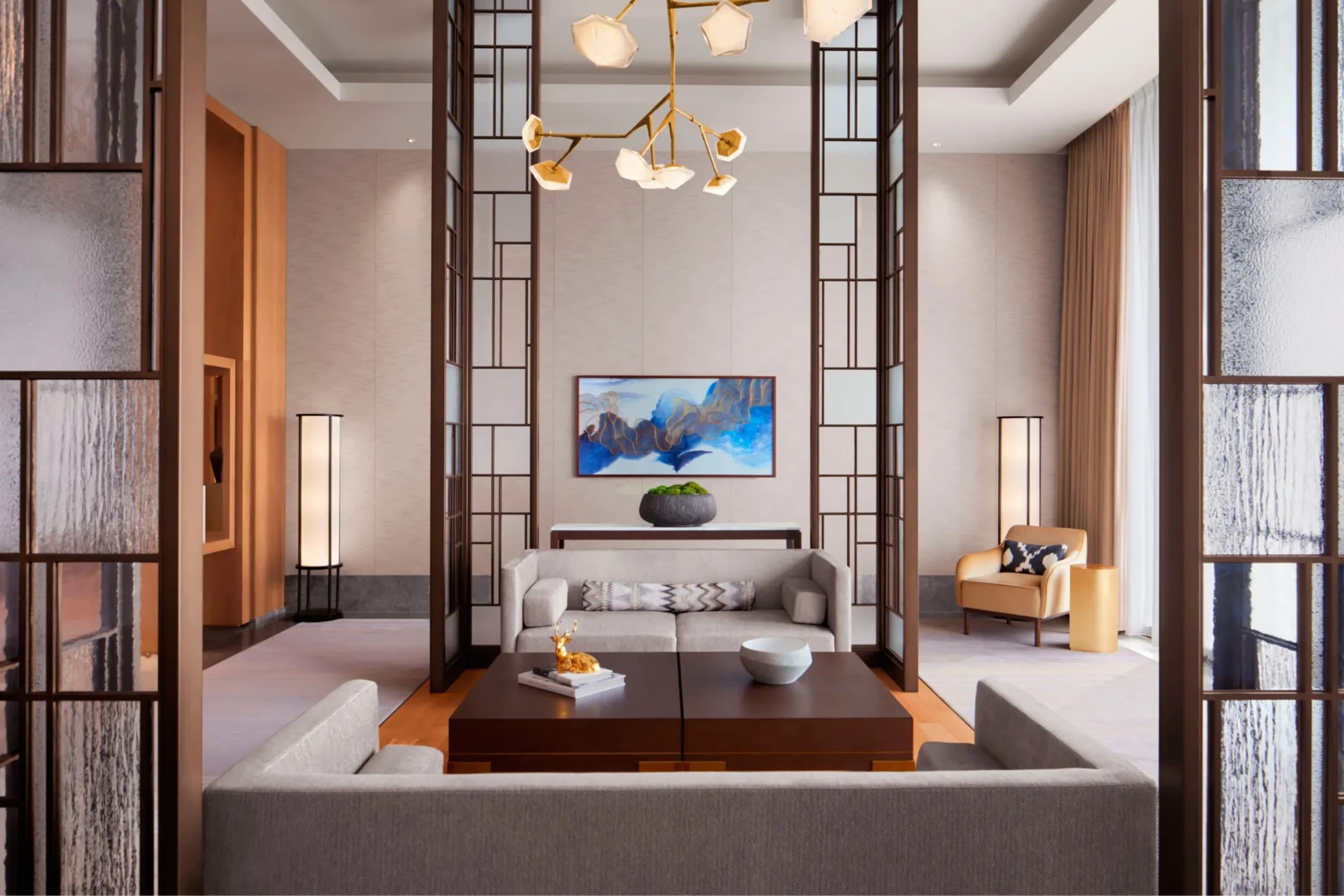
Image courtesy of JW Marriott Hotel Nara
Noborioji Hotel Nara: Just steps from Nara Park and the iconic Todai-ji Temple, this boutique luxury hotel offers a refined and intimate experience with elegant rooms and French-inspired cuisine. It’s especially ideal if you’re looking for a stay steeped in culture.
Fora Perks include $50 hotel credit, daily breakfast, an upgrade and extended check-in/out whenever possible.
JW Marriott Hotel Nara: An upscale Western-style retreat with touches of traditional Japanese aesthetics. It’s also conveniently located near Nara Park and other notable sites.
Fora’s Marriott LUMINOUS partner perks at JW Marriott Hotel Nara include a $100 hotel credit, a welcome amenity, daily breakfast, an upgrade and extended check-in/out whenever possible.
Fora Advisors’ insights on where to stay in Japan
While exploring Japan’s best places to stay, here are a few pro tips from Fora Advisors.
Slow down, and don’t be afraid to get off the beaten path
A planned itinerary is a great way to get the most out of your stay, but leave time to wander. All of Japan’s destinations have their share of hidden gems.
“When you visit, take the time to slow down — immerse yourself fully and let your senses guide you,” Fora Advisor Anna Dobrenski recommended. “Whether it’s the aroma of freshly brewed matcha, the feel of tatami beneath your feet or the sight of a serene temple, Japan will surprise and delight you at every turn.”
The best meals aren’t exclusive to fine restaurants
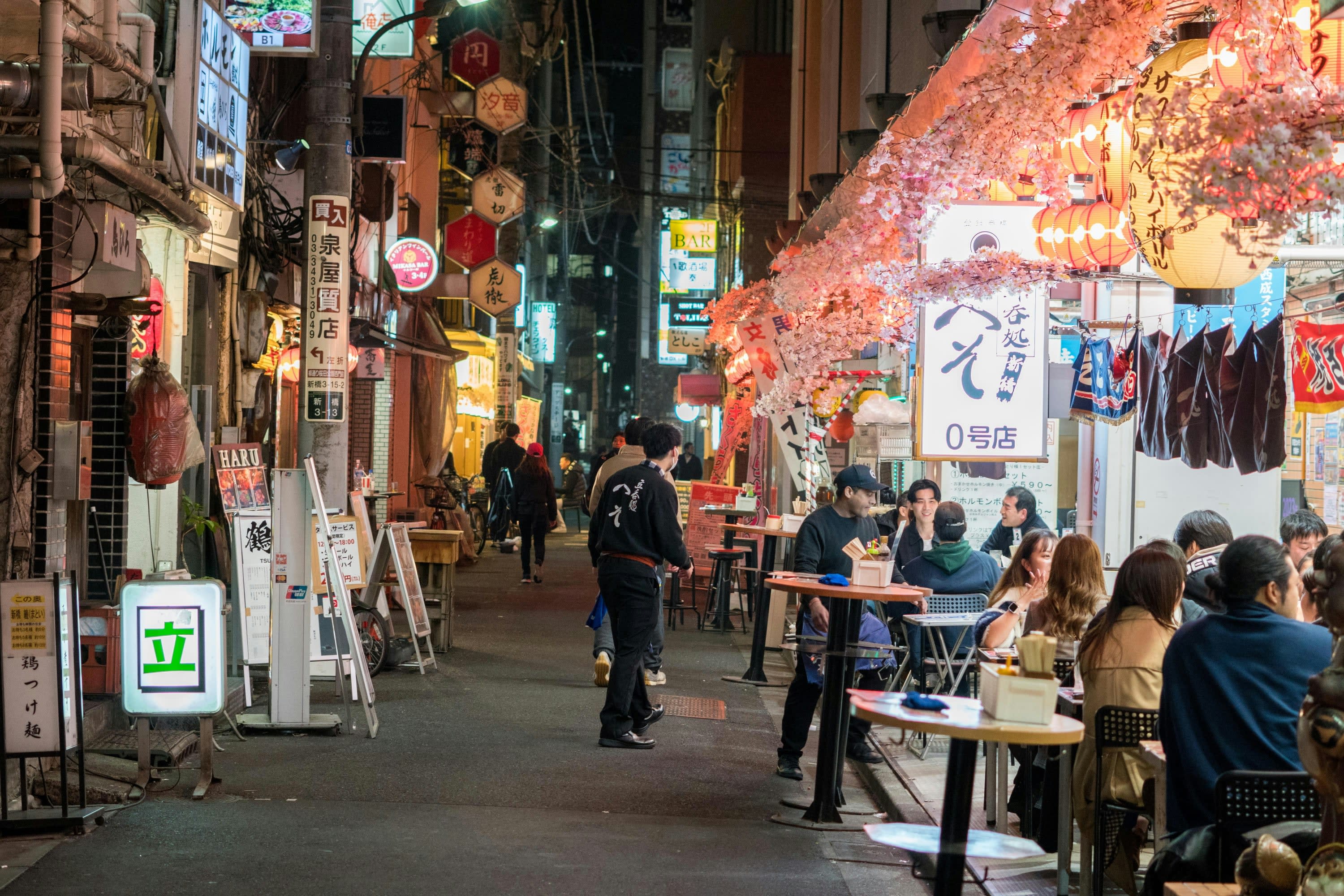
Tokyo, Osaka, Okinawa: Japan is a foodie destination through and through, from the finest restaurants to food stalls and regional cuisines.
“Try a kaiseki meal once, and leave some room in your itinerary to discover some hole-in-the-wall hot spots,” Fora Advisor Kirsty Cowie recommended. (Kaiseki is a traditional, multi-course Japanese meal of varying dishes.) She cautioned against making restaurant reservations for every meal, as this can dig into your itinerary time.
When you do choose a sit-down restaurant, Fora Advisor Daryn Schwartz recommended making a reservation well in advance. Many places have minimal seating, and walk-in’s aren’t always accommodated (some restaurants don’t accept them at all).
Fora Advisor Nancy McLaughlin noted that tipping at a restaurant can be seen as rude. It’s not practiced in Japan. Nancy, along with several other Fora Advisors, also recommended checking out Japanese 7-Eleven’s (trust) “for really fun and authentic grab-and-go Japanese foods!”
A Japan Rail Pass doesn’t always make sense
A Japan Rail Pass essentially allows for unlimited travel on Japan Rail trains between all of the country’s best destinations. But it’s not always your best option. Per Fora Advisor Chloe Kletsa, if your route involves a lot of local railways, you may save money by purchasing tickets à la carte.
Fora Advisor Rita Carton added that all trains (and buses) follow strict schedules — arrive early. Another tip from Nancy: Make use of luggage-forwarding services the night before transferring hotels, as trains can’t accommodate large suitcases.
Cherry Blossom season is beautiful, but don’t sleep on fall in Japan
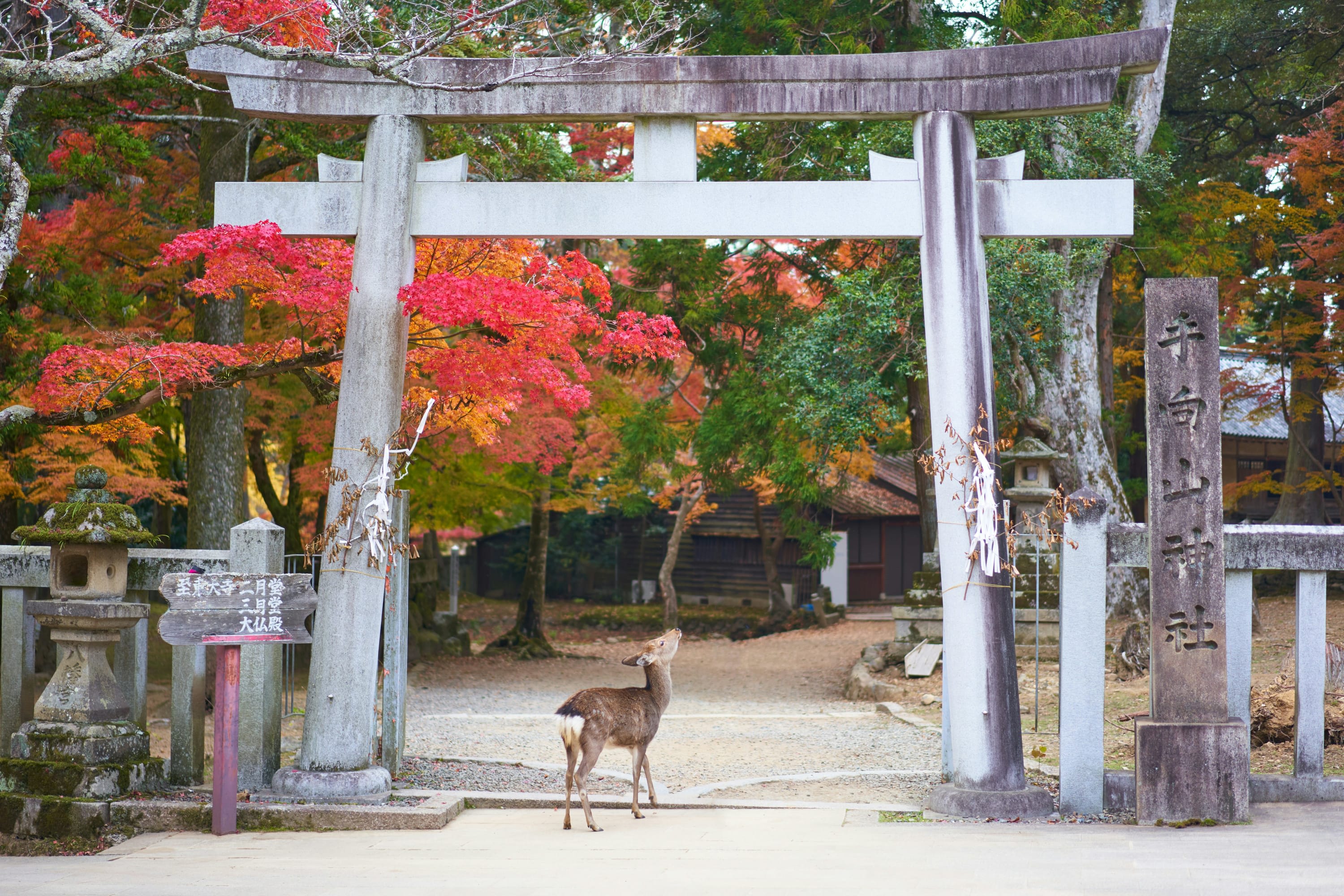
Japan’s Cherry Blossom season is deservedly famous, but it’s not the only time worth visiting Japan’s top destinations.
“Everyone wants to visit Japan during Cherry Blossom season; however, I believe that fall is as magical as spring, if not more,” Chloe said. “The shades of yellows, reds and oranges make the Japanese countryside appear on fire.”
Chloe also noted that Japan, particularly Hokkaido, is great to visit in winter: “Hokkaido is often praised for its fresh, soft and powdery snow and beautiful slopes.”
More world travel inspiration
Check out more articles on exciting destinations around the world:
